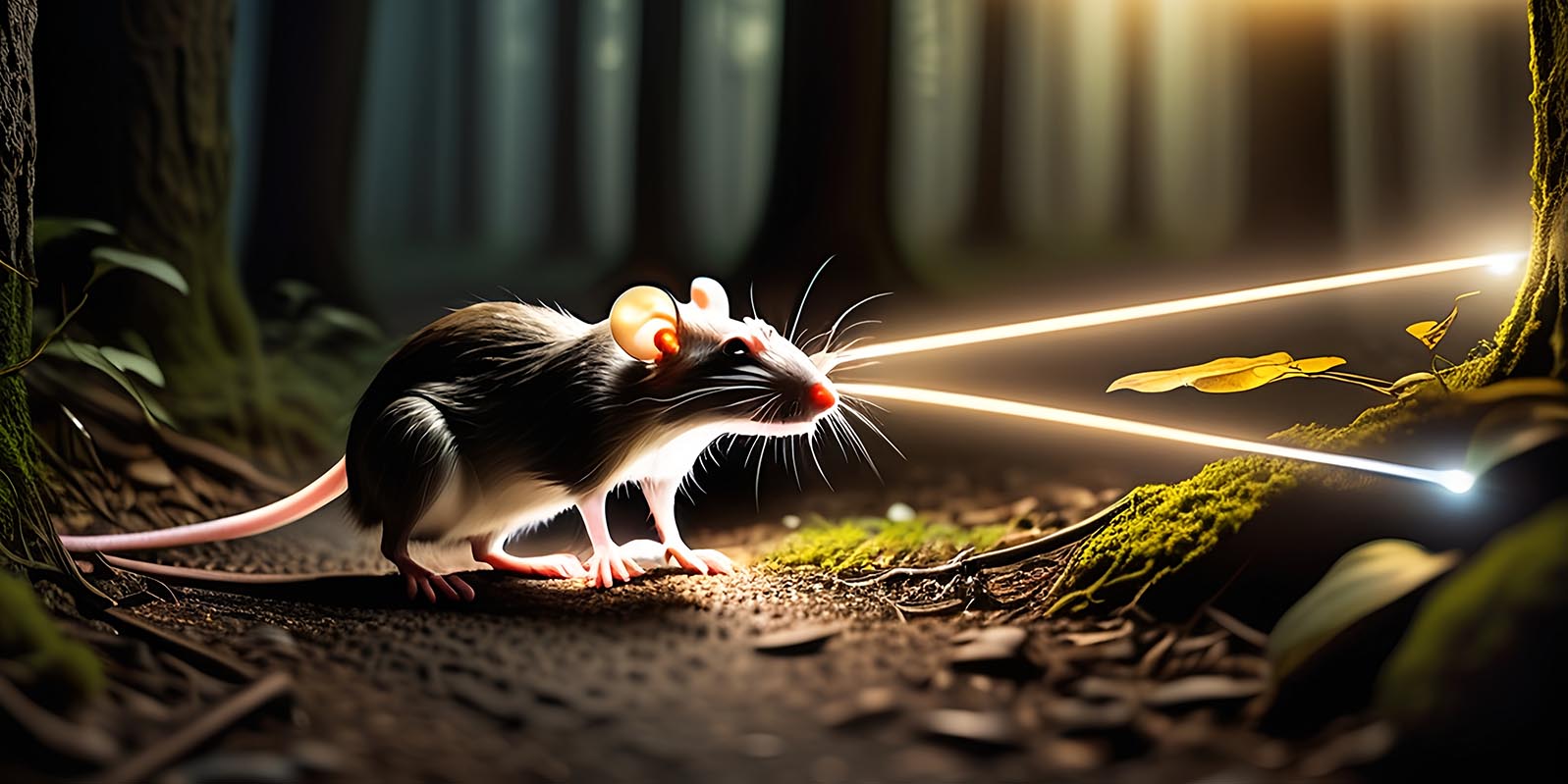Moser Group - Kavli Institute for Systems Neuroscience
Moser Group

Kavli Institute's Space and memory Group
Memories are the brain’s map of time
Our brain doesn’t merely register time – it structures it, new research from the Kavli Institute for Systems Neuroscience shows.
The research team led by NTNU’s Nobel Laureates May-Britt and Edvard Moser, from the Kavli Institute for Systems Neuroscience, is already known for their discovery of the brain’s sense of place.
Now they have shown that the brain also weaves a tapestry of time: The brain segments and organizes events into experiences, placing unique bookmarks on them so that our lives don’t become a blurry stream, but rather a series of meaningful moments and memories we can revisit and learn from.
We live in a continuous stream of fleeting sensory information. How do we manage to select and segment this stream of reality into meaningful experiences we carry forward in life?
The NTNU researcher have found a “jumping” answer in a new study published in Science.
Read more about this discovery here!

Researchers from the Kavli Institute for Systems Neuroscience have shown that the brain segments and organizes events into experiences, placing unique bookmarks on them. That keeps our lives from becoming a blurry stream, and is instead a series of meaningful moments and memories we can revisit and learn from. Illustration: Astrid Strømmen/NTNU
The study was carried out by Ben Kanter (first author), Christine Marie Lykken, Ignacio Polti, May-Britt Moser (senior author), and Edvard Moser (senior author) from the Moser Group at the Kavli Institute for Systems Neuroscience, NTNU.
Reference: Benjamin R. Kanter et al., Event structure sculpts neural population dynamics in the lateral entorhinal cortex. Science 388, eadr0927 (2025). https://doi.org/10.1126/science.adr0927
LATEST RESEARCH: SPACE AND NAVIGATION
A breakthrough discovery at the Kavli Institute in Norway has uncovered a previously unknown function of grid cells, the specialized neurons that help the brain map space.
Discovered in 2005 by May-Britt and Edvard Moser, grid cells lay the foundation for building mental maps of your surroundings and for tracking your precise positions within these landscapes. As you move around your environment, your movements are being followed by grid cells on an internal map.
But now it turns out that grid cells also perform rapid, rhythmic sweeps into the space ahead of the animal. These sweeps act almost like an antenna, allowing the animal to probe the environment ahead of it. This revelation reshapes our understanding of spatial navigation in the brain.

Ten times per second, grid cells send sweeping probes into the space in front of the rat, in a very regular pattern. Alternately 30 degrees to the right and 30 degrees to the left. Illustration: Rita Elmkvist Nilsen / Kavli Institute / NTNU
Read the full story here:
Sweeps: For Twenty Years, Grid Cells Kept a Secret
Reference:
Vollan, A.Z., Gardner, R.J., Moser, MB. et al. Left–right-alternating theta sweeps in entorhinal–hippocampal maps of space. Nature (2025). https://doi.org/10.1038/s41586-024-08527-1
Technical Coordinator NORBRAIN
Moser Lab Members
-
Simon William Ball Senior Engineer
+4741310644 simon.ball@ntnu.no Section for IT FOCUS -
Edgar Baumler Postdoctoral Fellow
edgar.baumler@ntnu.no Kavli Institute for Systems Neuroscience -
Jo Carpenter PhD Candidate
jordan.carpenter@ntnu.no Kavli Institute for Systems Neuroscience -
Nienke Laura De Jong PhD Candidate
nienke.l.de.jong@ntnu.no Kavli Institute for Systems Neuroscience -
Rita Elmkvist-Nilsen Head of Communication
+4790768686 rita.elmkvist@ntnu.no Kavli Institute for Systems Neuroscience -
Hanna Eneqvist PhD Candidate
hanna.u.l.eneqvist@ntnu.no Kavli Institute for Systems Neuroscience -
Rich Gardner Researcher
richard.gardner@ntnu.no Kavli Institute for Systems Neuroscience -
Matteo Guardamagna Postdoctoral Fellow
matteo.guardamagna@ntnu.no Kavli Institute for Systems Neuroscience -
Kyrre Haugen Head Engineer
+47-73598302 +4793216447 kyrre.haugen@ntnu.no Kavli Institute for Systems Neuroscience -
Ella Holt Holmberg Head Engineer
+4745039919 ella.h.holmberg@ntnu.no Kavli Institute for Systems Neuroscience -
Ragnhild Irene Klæboe Jacobsen Researcher (Kavli) and Associate Professor (IBI)
+47-73591736 ragnhild.i.jacobsen@ntnu.no Kavli Institute for Systems Neuroscience -
Klaus Jøran Jenssen Head Engineer
+4790600121 klaus.jenssen@ntnu.no Kavli Institute for Systems Neuroscience -
Benjamin Richard Kanter Researcher
benjamin.kanter@ntnu.no Kavli Institute for Systems Neuroscience -
Asgeir Kobro-Flatmoen Researcher
+47-73597853 asgeir.kobro-flatmoen@ntnu.no Kavli Institute for Systems Neuroscience -
Endre Kråkvik Senior Engineer
+47-73598261 +4790601447 endre.krakvik@ntnu.no Kavli Institute for Systems Neuroscience -
Ane Lautrup PhD Candidate
ane.lautrup@ntnu.no Kavli Institute for Systems Neuroscience -
Christine Marie Lykken Researcher
christine.lykken@ntnu.no Kavli Institute for Systems Neuroscience -
Endre Levente Marosi Postdoctoral Fellow
endre.l.marosi@ntnu.no Kavli Institute for Systems Neuroscience -
Valentin A. Normand
valentin.normand@ntnu.no -
Horst Obenhaus Researcher
horst.obenhaus@ntnu.no Kavli Institute for Systems Neuroscience -
Valdemar Lee Kargård Olsen PhD Candidate
valdemar.k.olsen@ntnu.no Kavli Institute for Systems Neuroscience -
Martin Sebastian Pofahl Postdoctoral Fellow
martin.pofahl@ntnu.no Kavli Institute for Systems Neuroscience -
Ignacio Polti Postdoctoral researcher
+47-73413205 ignacio.polti@ntnu.no Kavli Institute for Systems Neuroscience -
Marina Rodrigues Jorge Senior Engineer
marina.jorge@ntnu.no Kavli Institute for Systems Neuroscience -
Rajat Saxena Postdoctoral Fellow
rajat.saxena@ntnu.no Kavli Institute for Systems Neuroscience -
Michael Schellenberger PhD Candidate
michael.schellenberger@ntnu.no Kavli Institute for Systems Neuroscience -
Torstein Slettmoen MD, PhD Candidate
torstein.slettmoen@ntnu.no -
Nadia van Eekelen PhD Candidate
nadia.van.eekelen@ntnu.no Kavli Institute for Systems Neuroscience -
Gilberto Rojas Vite Postdoctoral Fellow
gilberto.r.vite@ntnu.no Kavli Institute for Systems Neuroscience -
Abraham Zelalem Vollan PhD Candidate
abraham.z.vollan@ntnu.no Kavli Institute for Systems Neuroscience
